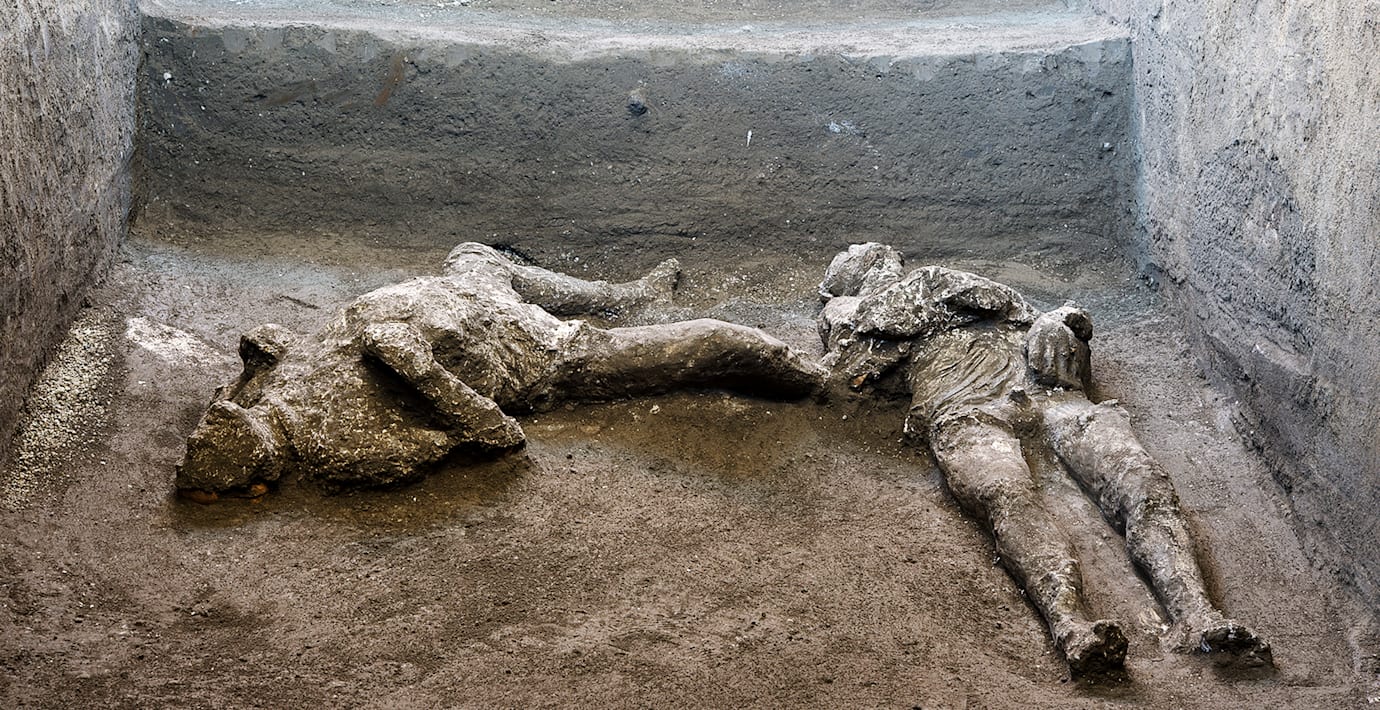
2 000 år senare: Två män har grävts fram i Pompeji
Arkeologer har grävt fram två män från ruinerna i staden Pompeji, 2 000 år efter katastrofen, skriver Reuters.
En av männen var mellan 30 och 40 år gammal och troligen välbärgad, enligt forskare. Den andra mannen var mellan 18 och 23 år. Hans kroppsskador tyder på att han var en slav.
– De har dött av termisk chock, vilket också framgår av deras sammandragna fötter och händer, säger Massimo Osanna, chef för utgrävningen. Han menar att männen troligen dog då de, förgäves, sökte skydd.
Vulkanen Vesuvius hade sitt berömda utbrott år 79 efter Kristus.
bakgrund
Pompeji
Wikipedia (en)
Pompeii (, Latin: [pɔmˈpeːjjiː]) was an ancient city located in what is now the comune of Pompei near Naples in the Campania region of Italy. Pompeii, along with Herculaneum and many villas in the surrounding area (e.g. at Boscoreale, Stabiae), was buried under 4 to 6 m (13 to 20 ft) of volcanic ash and pumice in the eruption of Mount Vesuvius in AD 79.
Largely preserved under the ash, the excavated city offered a unique snapshot of Roman life, frozen at the moment it was buried, and an extraordinarily detailed insight into the everyday life of its inhabitants, although much of the evidence was lost in the early excavations. It was a wealthy town, enjoying many fine public buildings and luxurious private houses with lavish decorations, furnishings and works of art which were the main attractions for the early excavators. Organic remains, including wooden objects and human bodies, were entombed in the ash. Over time, they decayed, leaving voids which archaeologists found could be used as moulds to make plaster casts of unique — and often gruesome — figures in their final moments of life. The numerous graffiti carved on the walls and inside rooms provide a wealth of examples of the largely lost Vulgar Latin spoken colloquially at the time, contrasting with the formal language of the classical writers.
Pompeii is a UNESCO World Heritage Site and is one of the most popular tourist attractions in Italy, with approximately 2.5 million visitors annually.After many excavations prior to 1960 that had uncovered most of the city but left it in decay, further major excavations were banned and instead they were limited to targeted, prioritised areas. In 2018, these led to new discoveries in some previously unexplored areas of the city.
bakgrund
Vulkanen Vesuvius utbrott
Wikipedia (en)
Of the many eruptions of Mount Vesuvius, a major stratovolcano in southern Italy, the most famous is its eruption in 79 AD, which was one of the deadliest in European history.In the late summer or autumn of 79 AD, Mount Vesuvius violently spewed forth a deadly cloud of super-heated tephra and gases to a height of 33 km (21 mi), ejecting molten rock, pulverized pumice and hot ash at 1.5 million tons per second, ultimately releasing 100,000 times the thermal energy of the atomic bombings of Hiroshima and Nagasaki. The event gives its name to the Vesuvian type of volcanic eruption, characterised by eruption columns of hot gases and ash exploding into the stratosphere, although the event also included pyroclastic flows associated with Pelean eruptions.
At the time, the region was a part of the Roman Empire, and several Roman cities were obliterated and buried underneath massive pyroclastic surges and ashfall deposits, the best known being Pompeii and Herculaneum. After archaeological excavations revealed much about the lives of the inhabitants, the area became a major tourist attraction, and is now a UNESCO World Heritage Site and part of Vesuvius National Park.
The total population of both cities was over 20,000. The remains of over 1,500 people have so far been found at Pompeii and Herculaneum, although the total death toll from the eruption remains unknown.
Omni är politiskt obundna och oberoende. Vi strävar efter att ge fler perspektiv på nyheterna. Har du frågor eller synpunkter kring vår rapportering? Kontakta redaktionen